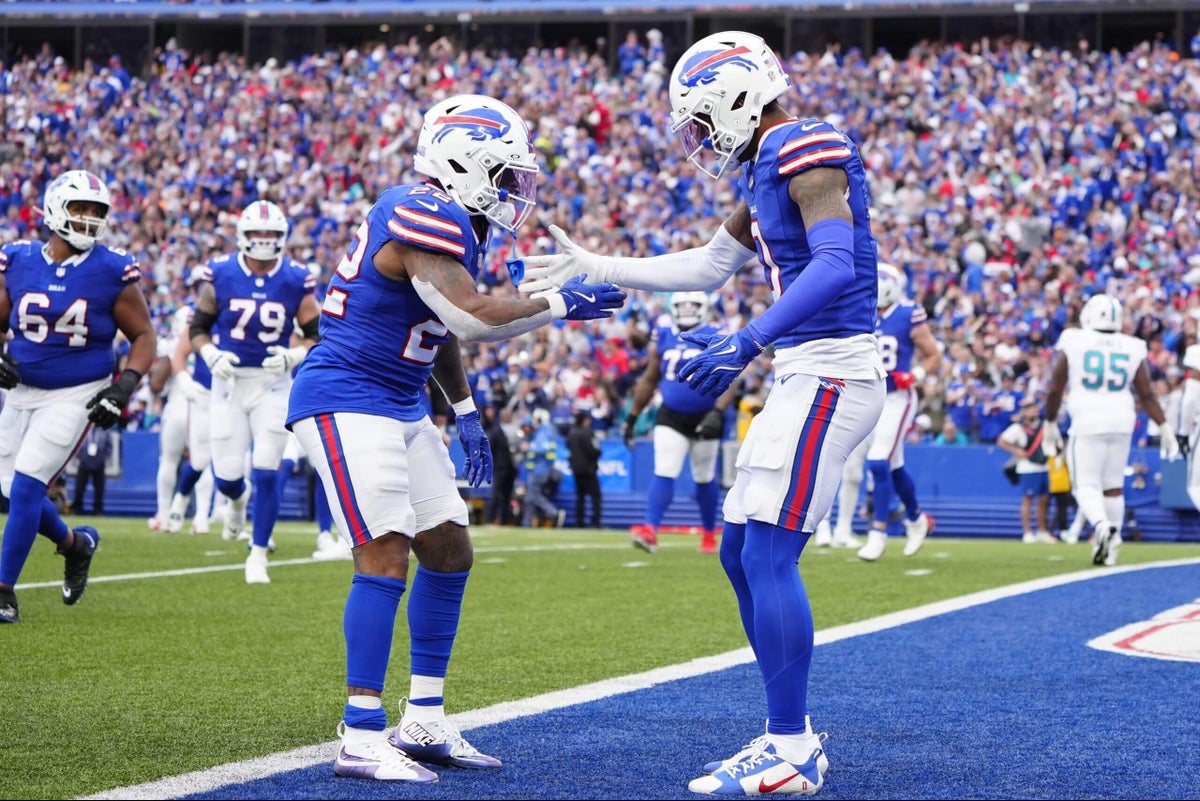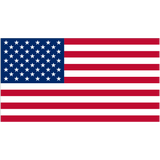

The Bills will begin their annual Organized Team Activities in one week, giving us our first glimpse of the 2025 roster. In addition to getting to see the newest version of the Bills together, it’s the official beginning of the evaluation period for the roster beyond this upcoming season.
On Monday, we discussed how the team’s cap standing in 2026, mixed with a lot of difficult decisions, would yield a magnifying glass on the upcoming year. Along the same lines, with as many extensions and new money they handed out this offseason, it puts a focal point on the 2026 NFL Draft. Although it’s extremely early, and much can change between now and next year’s draft, it’s always wise to keep an eye on what could be coming in their next stage of roster building.
Advertisement
As things are about to begin on the field in Orchard Park, here’s an early look at what the Bills’ top draft needs could be in 2026.
Wide receiver
The Bills had great results in points scored during the 2024 season, and although consistent in other ways to generate that offense, they didn’t have a constant fastball they could depend on for their passing game. They depended on shorter targets yielding yards after the catch without having the deep-field speed and intermediate separation skills within their receiver room that challenged defenses on all three levels. Deep-field throws mostly depended on coverage busts, with Josh Allen extending the play, or jump ball and back shoulder passes with one of their taller receivers who couldn’t separate from their defender. The Bills signed Joshua Palmer in the offseason, and he should help with some of the route-running separation problems they had in the intermediate passing game. However, the Bills still lack true deep-field speed, and on top of that, finding a player who can develop into a key piece of their passing attack to help draw attention from other receivers could easily become a priority next offseason.
The Bills feel good about their room for 2025, but some decision points are coming. Keon Coleman will head into his third season in 2026, and by then, they should have a good idea about his potential ceiling in their offense. Curtis Samuel, should they cut him in 2026, would yield over $6 million in cap savings next offseason. And, although he isn’t a receiver, tight end Dalton Kincaid will be three seasons into his NFL career, and like Coleman, the Bills should have a good idea if he can be the impact player they hoped he’d be when they drafted him. If someone with potential doesn’t take a step forward, and if Palmer is more of a role player than a consistent contributor, the door should remain wide open for the Bills to take one as early as the first round. Wide receiver is in the sweet spot where there is usually a good amount of top-end talent that provides value in the back half of the first round. On top of that, drafting a potential long-term top receiver option on a cost-controlled rookie deal through Allen’s age-33 season when his cap hits get at their peak, given how much it costs to re-sign receivers, is sound roster-building logic.
Edge rusher
Water is wet, the sky is blue, and the Bills may be on the lookout for another edge rusher in the draft next year. The Bills have one obvious starter on their roster that will be on the team in 2026 — Greg Rousseau. Past him, the Bills have questions. Both Joey Bosa and A.J. Epenesa are free agents in 2026. Their third-round pick in 2025, Landon Jackson, could have a future as a starter, though it may be difficult to project him into the job after one year as a likely rotational defensive end. It also remains to be seen what kind of role free agent signing Michael Hoecht will have. Although Jackson can’t be ruled out, the Bills may not want to go into the next year depending on him to win the job outright.
Advertisement
They could use the Terrel Bernard approach from a couple of years ago when they had Bernard in his second training camp battle with Tyrel Dodson for the starting job. However, there is a massive difference between the potential starting ability of a third-round pick in his second season as a linebacker compared to a defensive end, especially with how much of a premium the Bills place on Jackson’s position. Jackson would need to show substantial potential in his rookie season for them to completely ignore drafting an edge rusher with an early pick. On the flip side, finding impact pass rushers near the bottom of the first round, which is where the Bills are trending toward picking again next year, is difficult. Depending on how Jackson develops in his first season, it could be another one-year free agency grab like they did with Bosa.
Interior offensive line
In 2024, the Bills had the best offensive line play of the Josh Allen era, featuring a high level of consistent play and remarkable health across their starting five. The Bills will return the group in its entirety in 2025, but it’s beginning to look like there will be at least one change after the year. Starting center Connor McGovern and left guard David Edwards are free agents at the end of the year, and right guard O’Cyrus Torrence (2027 free agent) will be extension-eligible next offseason. They already face potential cap difficulties in 2026, so keeping the entire band together could prove difficult. If they lose one or both of the McGovern-Edwards duo, the Bills could use a selection in the first three rounds on an interior offensive lineman. They have a couple of options in-house with Alec Anderson and Sedrick Van Pran-Granger, but both are projections at this point without having more than preseason games and Week 18 against the Patriots for in-game NFL experience. The investment level on both — Anderson as an undrafted free agent and Van Pran-Granger as a fifth-round pick — was relatively low for the Bills, which could enhance the odds they use an early pick on one.
Running back
This potential draft need is not very complicated — it completely depends on whether the Bills re-sign James Cook for 2026. They have a couple of different options with Cook, possibly going with the long-term extension route or by the team using either the franchise or transition tag on him to keep him in-house for one more season. If they let Cook head to free agency, that immediately vaults running back up the draft priority list to replenish the position. Whether that means the draft pick vaults into Cook’s top role in 2026 or Ray Davis takes over the top role over the final two years of his rookie contract, they’ll need someone to pair with Davis for the long term. Ty Johnson is also signed through 2026 to round out the room.
Outside linebacker
The Bills have both a starter in Matt Milano and a primary backup in Dorian Williams set for the 2025 season. The Bills adjusted Milano’s contract to make him a free agent in 2026, which creates an opportunity for a new starter the following season. After the upcoming season, Williams only has one year remaining on his rookie contract, making him a free agent in 2027. Much of this need will depend on Milano’s health in 2025, and if he keeps Williams off the field for much of the season. If the Bills don’t see enough from Williams as a potential long-term starting option next to Bernard, using a pick on a potential starting outside linebacker will move up the list. The Bills may prefer the draft route anyway after giving Bernard a lucrative long-term deal. Since Beane has been in charge, they have generally avoided paying both of their starting linebackers big money at the same time, usually preferring one to be on a rookie deal. If that holds, it could be an early-round consideration.
Safety
The Bills have exhibited a lot of trust and faith in Taylor Rapp as a starter, and will likely get to see how 2024 second-round pick Cole Bishop fares in the starting lineup this year. Rapp remains under contract in 2026, which gives them a solid year to develop an early to mid-round draft pick, while Rapp either starts or splits reps with the rookie in 2026. That lends itself to how the Bills usually like to use young players on defense before giving them the full go-ahead in their starting lineup. The team does have a potential in-house option in 2025 fifth-round pick Jordan Hancock, who they are currently cross-training at both safety and nickel. For what it’s worth, Hancock said at rookie minicamp that he likes playing safety. If he shows any long-term starting potential, it lessens this need.
Advertisement
“To be determined” potential needs
Offensive tackle — Spencer Brown is locked in as the long-term starting right tackle, while left tackle Dion Dawkins is under contract through the 2027 season. However, with Dawkins entering his age-31 season in 2025, the Bills should be on the lookout for any signs of decline. To be clear, Dawkins has exhibited no signs of that to date, but given his age, it would be unwise to completely dismiss the possibility of it happening just because it hasn’t yet. In-house, the only developmental left tackle prospects the Bills have are 2024 sixth-round pick Tylan Grable and Ryan Van Demark, who Grable passed on the depth chart last year.
Nickel — Taron Johnson is still one of the team’s top defenders, though he did struggle with injury in 2024 more than he had in a few seasons leading up to it. Johnson will turn 30 ahead of the 2026 season, plus his primary backup, Cam Lewis, will be a free agent next offseason. The Bills may look to develop someone on a rookie deal, especially if Hancock becomes a full-time safety.
Backup QB — One of these years, the Bills are going to have to take another quarterback… right? That’s not to say they’ll take one on the first two days or that it will keep them from signing a veteran backup, but developing a young quarterback on a rookie deal to be the backup is a good cost-cutting alternative as the cap percentages of their core players increase. Both Mitchell Trubisky and Mike White are free agents after 2025, too.
(Top photo of Ray Davis and Keon Coleman: Gregory Fisher / Imagn Images)
This news was originally published on this post .








Be the first to leave a comment